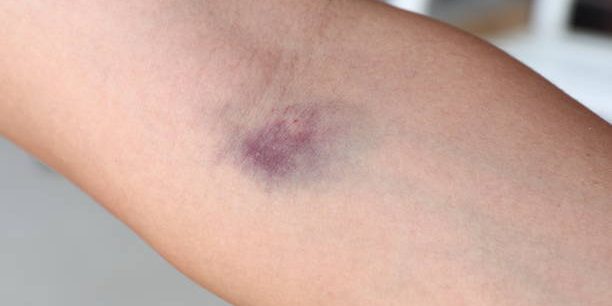A hematoma is a bad bruise that happens when blood pools under the skin. Although patients may feel a little uneasy when they see bruises following blood, this is typically nothing out of the ordinary. Bruising typically happens because blood may leak into the surrounding skin as the needle is withdrawn when a vein is accessed for a blood sample.
Bruising is more likely to occur when blood is drawn from a small vein with a large-gauge needle or when the needle goes through the vein before the blood sample is successfully collected. Injuries to the blood vessels or insufficient pressure at the site of the venipuncture may potentially be to blame for the bruise. Routine activities like lifting heavy objects after a blood collection will put strain on the venipuncture site and run the risk of causing the internal clot to get dislodged and blood to leak into the surrounding tissue.
In most cases, the bruising that patients experience following a blood draw is usually nothing to be concerned about. Phlebotomists can, however, provide a service to their patients by emphasising the value of applying pressure to the venepuncture site with a cotton pad after the blood is collected.
To minimise the risks of bruising during blood collection:
– Apply firm pressure to the venipuncture site until the bleeding has stopped.
– Do not carry anything heavy or undertake strenuous exercise within 24 hours of your blood test.
– Avoid strenuous exercise, and hot baths and saunas








